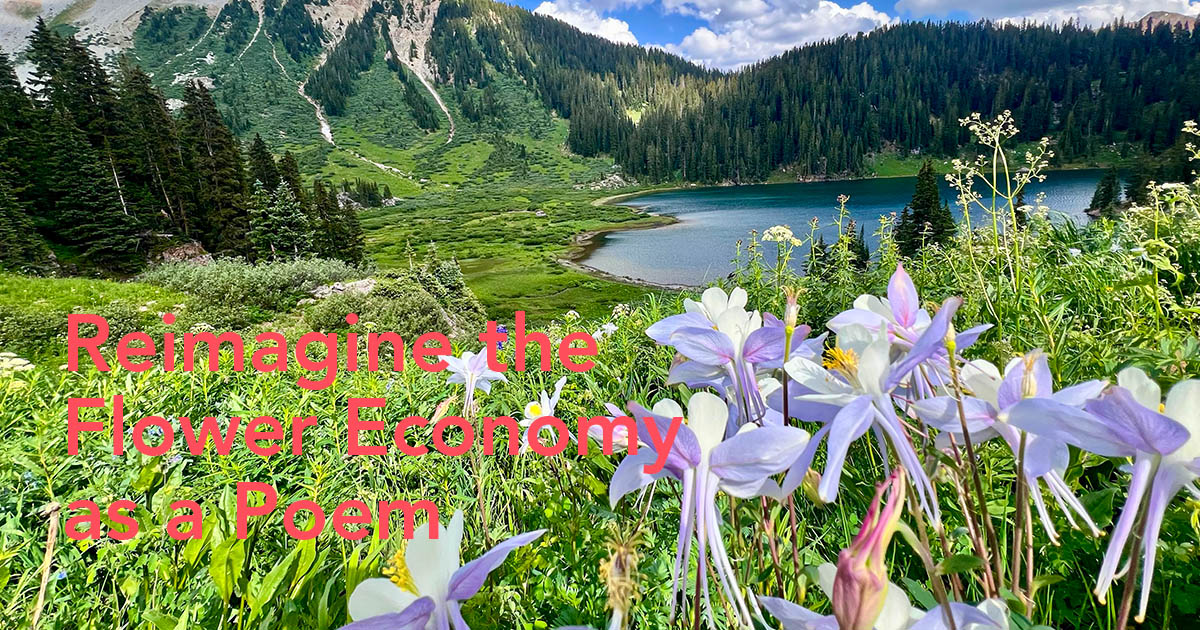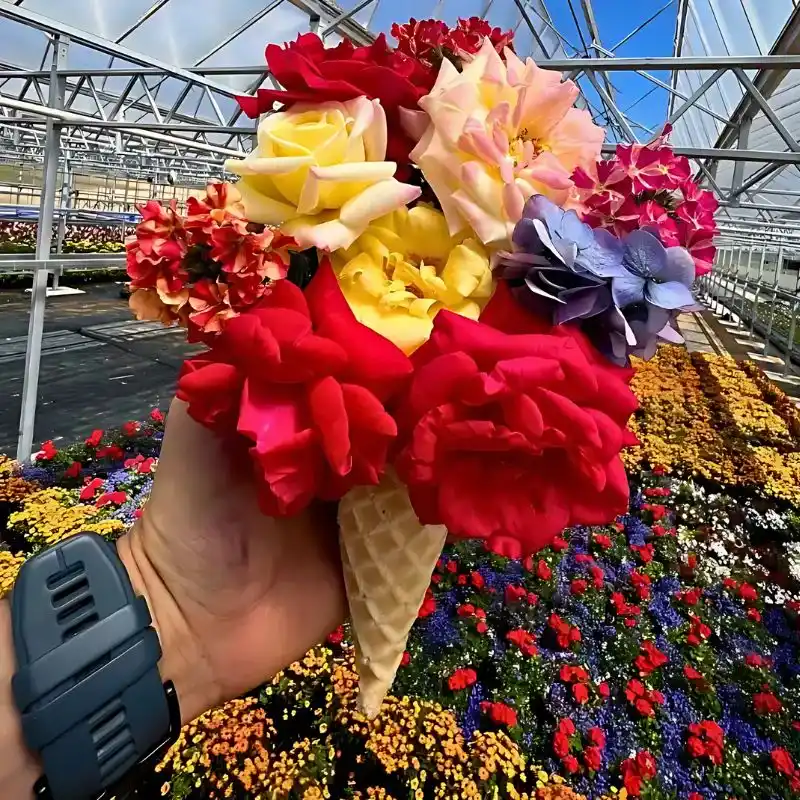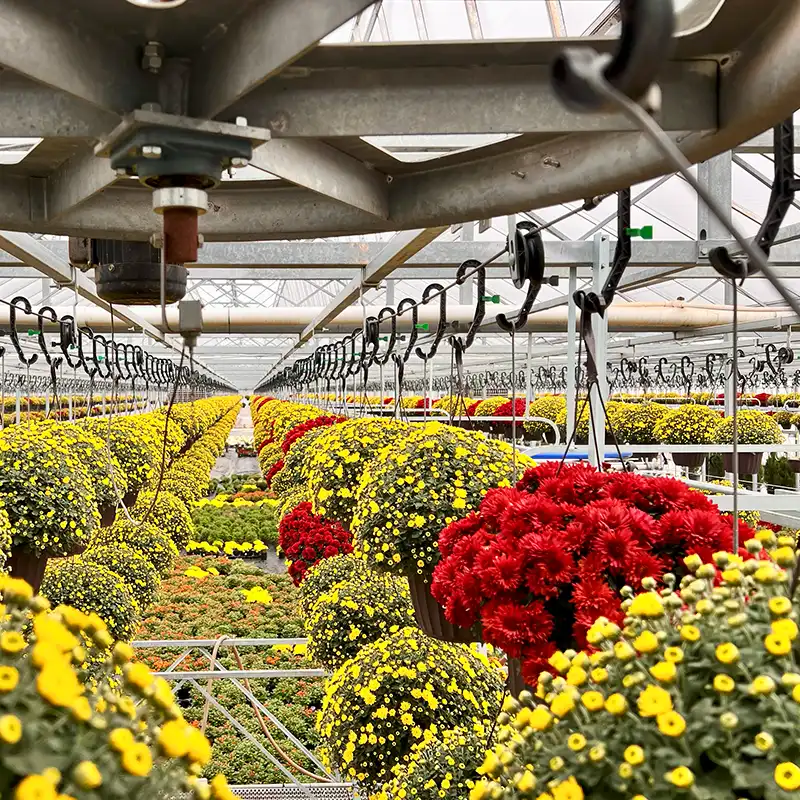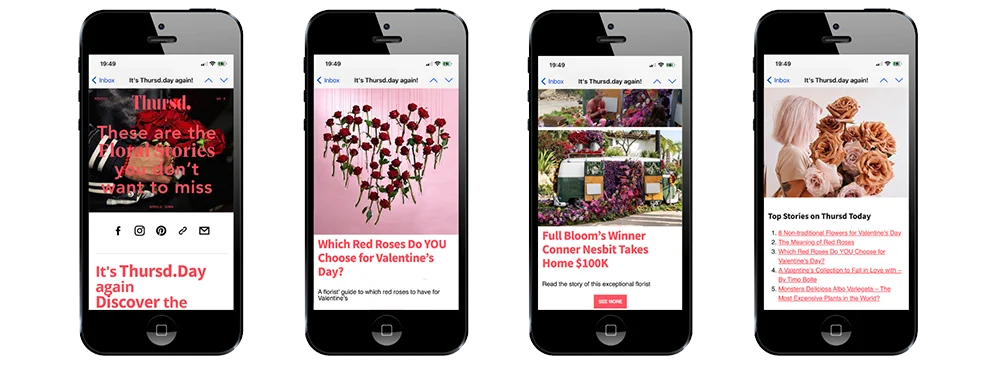The flower doesn’t rush.
It waits for sun, for silence, for storm.
What if our work in floriculture did the same?
As someone who works every day with soil under my nails and spirit tuned to the wider field, I’ve felt the ache of this fast world firsthand. In the race for more blooms, more yield, and more perfection, flower growing has started to feel like just another transaction. What was once sacred has been standardized. I’ve watched true ephemeral beauty get boxed up, shipped quietly, and sold stem by stem. And I understand why. We’re all trying to survive under the weight of rising economic, emotional, and societal pressure. In that struggle, there is a strong force turning us the other way out of necessity more than choice. In the churn of it all, something vital slips through the cracks: reverence, relationship, and the deeper pulse that first drew us to this work.
What if floriculture wasn’t a commodity machine, but a relational act?
What if we could reimagine the flower economy not as a pipeline, but as a poem?
The Problem With Petals Under Pressure
Capitalism loves predictability. It demands year-round roses, flawless stems, and fast shipping. But nature doesn’t operate on human deadlines.
.

The traditional cut-flower industry relies heavily on fossil fuels, chemical inputs, and exploitative labor. Most of these variables are invisible to the consumer. Flowers flown in from faraway fields. Farmers burned out by endless seasons. Designers asked to contort blooms into unnatural timelines. And when beauty becomes pressure, both the plant and the person suffer.
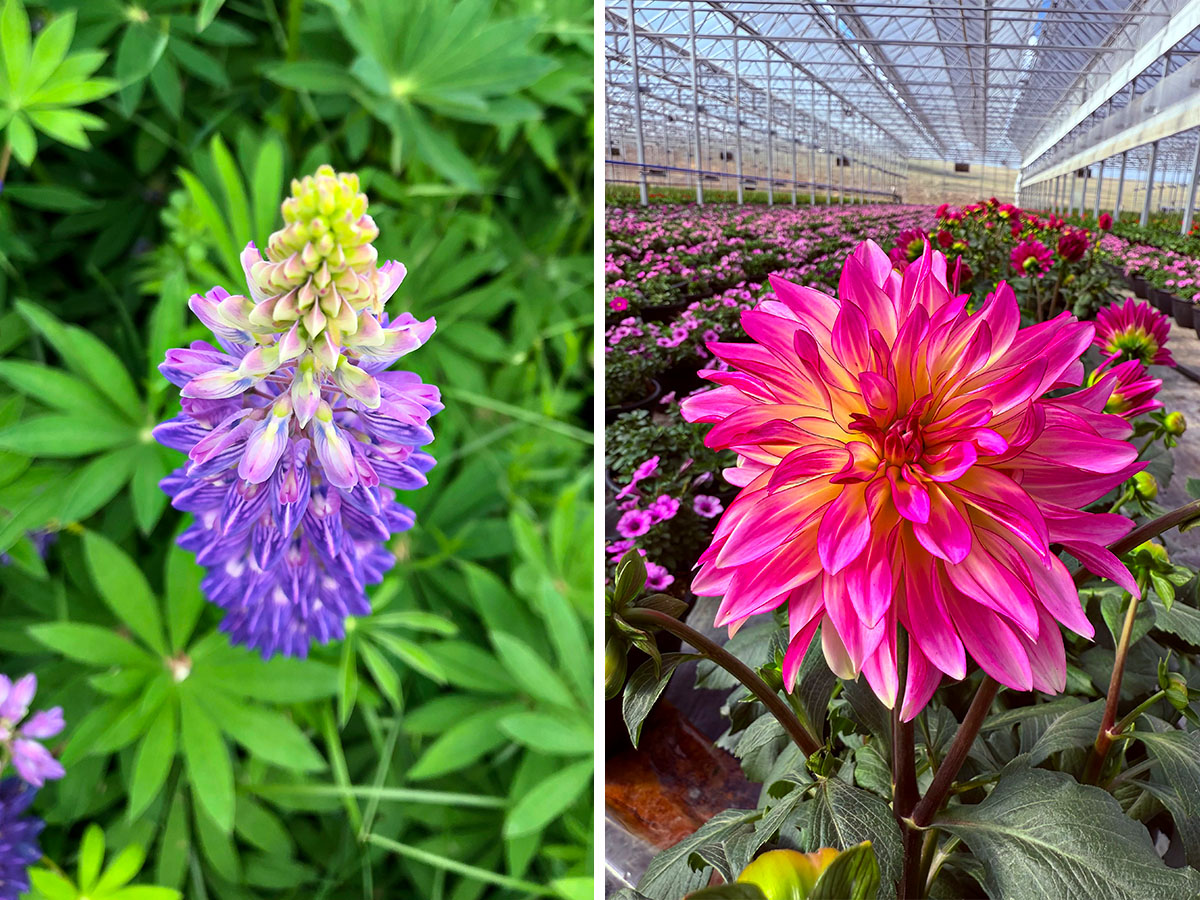
Post-Capitalist Growing: A Different Rhythm
I’m not here to denounce the entire flower trade. We all live in a world where commerce is part of survival. But what does feel essential now is a shift in how we define value. Not by volume or speed, but by connection, care, and context.
For me, it means growing with the rhythms of the local terroir. letting the soil and sky shape the cultivation palette, not solely a market trend. It means pricing with sustainability in mind, not scarcity or urgency. And maybe most importantly, it’s about offering bouquets not as symbols of status, but as gestures of relationship - between grower and ground, giver and receiver. I pose a gentle reminder that when we give flowers, we’re not just handing over beauty - we’re passing along a piece of earth, time, and trust.

Beauty That Nourishes, Not Extracts
Post-capitalist floriculture also means slowing the pace of design. Letting the flower lean how it wants to. Working with wilt, decay, and imperfection.
It’s ceremony over centerpiece.
It’s wildness over uniformity.
It’s the art of listening to land, to season, and to silence.
And it invites us to ask deeper questions:
- Where did these flowers come from?
- Who grew them?
- What was sacrificed for this arrangement?
- What could be regenerated instead?

A Personal Field Note: The Geraniums Remembered
During a spring sale in the greenhouse, I was mostly focused on logistics - moving trays, answering questions, making sure everything looked full and flourishing. It was one of those days where beauty flew out the door and conversations stayed short. I was busy talking about soil mixes when I noticed her - an older woman moving quietly, alone, pulling an empty rolling rack. She drifted slowly from bay to bay until she stopped in front of a block of potted Geraniums.
She leaned in, touched one gently, and inhaled. Then she closed her eyes.
“These were my grandmother’s flowers,” she said. “She kept pots of them on the windowsill every summer. The smell - it just brought me straight back.”
She spoke softly about the porch, the red blooms, how she’d deadhead them as a child, fingers sticky with sap. Then she chose one - a coral geranium just starting to bloom and held it like something sacred. She offered to pay, but I couldn’t take it. That plant had already given her something priceless.

It reminded me that not every exchange in this work is about money. Sometimes a container of soil and leaves holds a memory, a lineage, a love that outlasts the bloom itself. Sometimes, the plants return us to parts of ourselves we didn’t know we’d lost. And every so often, it’s not just us choosing the flowers - it’s the flowers choosing to find us.

This Vision Isn’t Easy, But It’s Possible
Let’s be honest… Reimagining any industry - much less an entire world - takes time, risk, and community effort. Not everyone has the privilege to farm slowly. Margins are tight. Systems are entrenched. But movements start in the soil. Quietly, persistently, together. This isn’t about moral purity or aesthetic minimalism. It’s about leaving space for a new rhythm to emerge.
So, the next time you pick up a bloom, ask yourself:
Who did this flower have to become for me to hold it?
And who do I want to become in return?

All images courtesy of Peter Ault.

